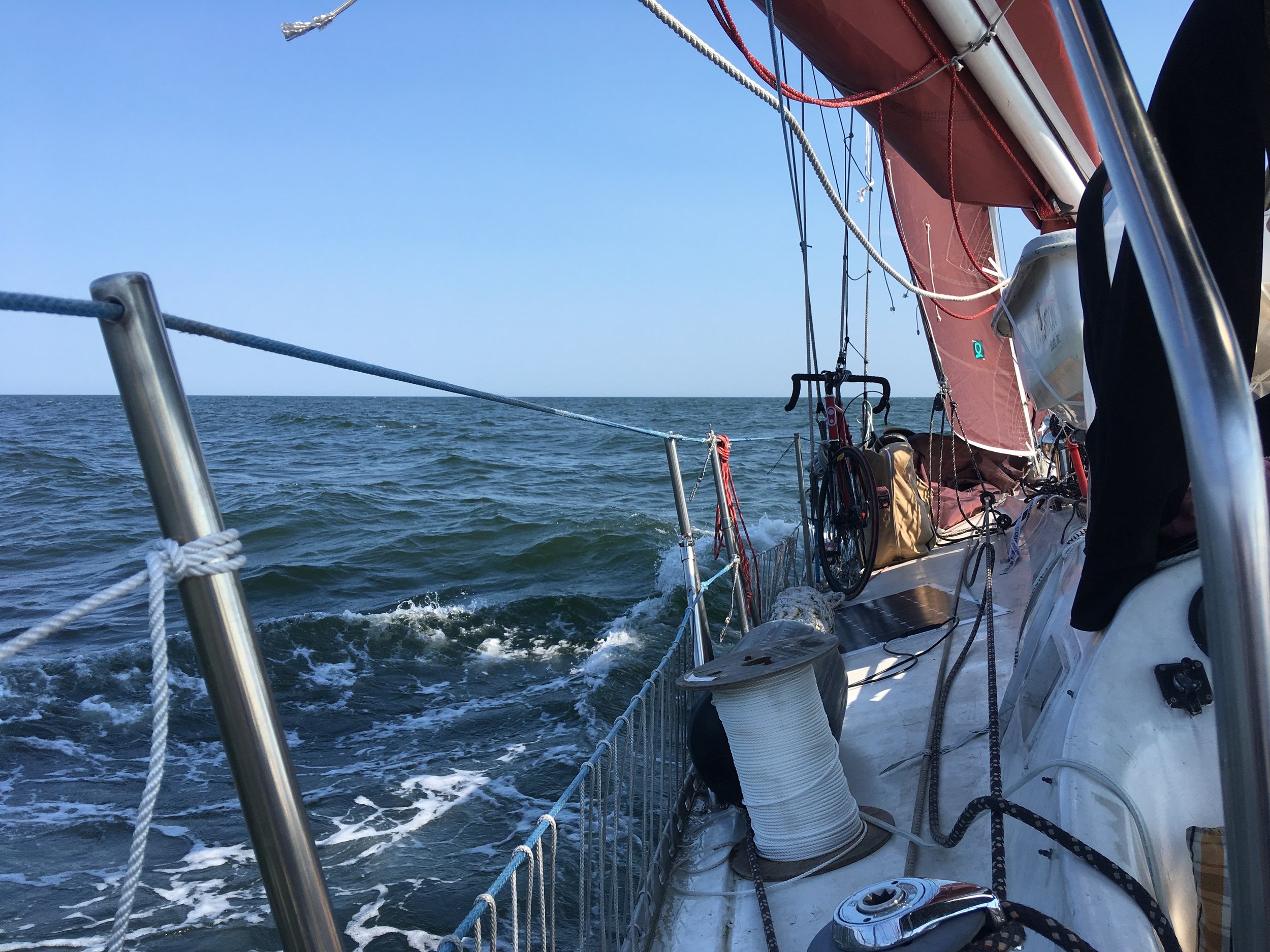The requirement for an anchor light for most pleasure boats is 360 degree visibility for 2 nautical miles. This means that the anchor light must be located above everything else that way it can be seen from any direction.
On a power boat, the anchor light is typically located at a reasonable height, just above the flying bridge. On a sailboat, this location is elevated significantly, as they are placed on top of the mast.
Yes, the anchor light is very visible from a distance, alerting others of your presence and preventing a needless collision, but only at a distance. When we have anchored in busy anchorages, where there seems to be a lot of boat traffic as the sun is setting, we notice that people have been skirting past us at a rediculously close range.
This made me wonder, do they see the anchor light way up high in the night sky? Or is it out of their field of view?
The other problem with a single white anchor light is it does nothing to demarcate where we start and where we end. Ideally, other boats would keep a safe and reasonable distance from us, thus nullifying any fears or concerns of a close passing vessel, but they do not seem to care in the same way. They will pass less than 10 feet from our bow or stern, missing us only by luck!
Before our luck runs out, we have made some alterations to our setup. We hung a solar powered lamp off the stern and off the bow. When we are anchored in a high traffic area, we can simply turn them on at the times of peak traffic (usually when small skiffs are returning home after the sun has set) so that these inconsiderate boaters can better see where we start and where we end.
I can not say for sure if this has worked becuase I do not know what is going through the mind of someone who flies through an anchorage at full throttle in the dark, but I can say that since we have started setting these lights, there has been a much greater distance granted between us and the speedy passerby.





